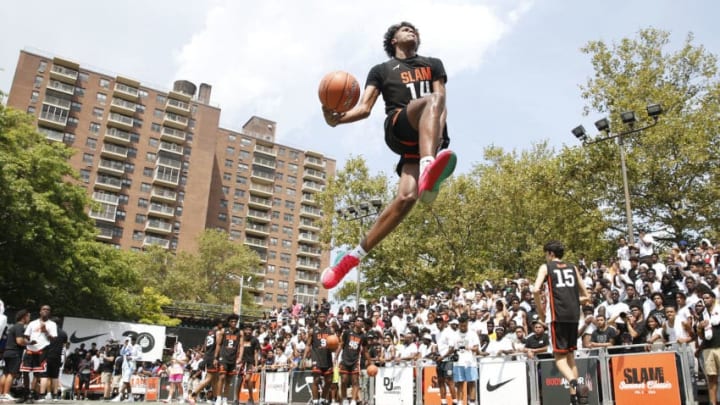
What the NCAA can counter with
The NCAA also has a move in their back pocket that can neutralize some of this by allowing student-athletes the ability to profit off their name, image, and likeness. I think this should have been done a long time ago, but the NCAA is taking it seriously now and is expected to have rules allowing it sometime within the next year or two.
No matter what they do, the NCAA is not going to be able to keep their current structure and offer salaries to athletes. That is an advantage the G League and other professional leagues will always have over the college model. But profiting off name, image, and likeness would open the door for endorsement deals for players, which would likely be far more lucrative than if that same player was in the G League, NBL, or somewhere else.
I don’t need to tell you about the large, rabid fan bases that exist in college sports, nor do I need to tell you about the level of national interest that leads to massive television contracts benefiting the NCAA and these programs. Heck, CBS is paying $1.1 billion a year to broadcast the NCAA Tournament.
Players benefit from that kind of exposure, and they would see the benefits in the form of endorsements and off-court earnings.
Speaking of the NCAA Tournament (which continues to grow annually in popularity) do you know how many one-and-done first-round picks have made the Final Four in the past four years? Just one – Malachi Richardson, who has only played in 70 career games in the NBA. These top-ranked prospects already haven’t contributed much to the highest levels of college basketball. It’s why the players on the 2012 Kentucky and 2015 Duke national championship teams are held in such distinct regard.
The new G League initiative is a new exciting wrinkle in the basketball landscape. It offers a lot for elite prospects and could very well start taking several top recruits away from colleges every year. It may also not work in the way these prospects are hoping.
But no matter what happens, college basketball continues to be in position to thrive on its own. It doesn’t compete with professional leagues on the compensation front, but there’s strength in everything else it does offer – and what it offers is not just for the handful of prospects that leave high school ranked the highest.
College basketball is not carried by one player or a group of players. It never has been and never will be. And it’s not going away anytime soon because of that.
